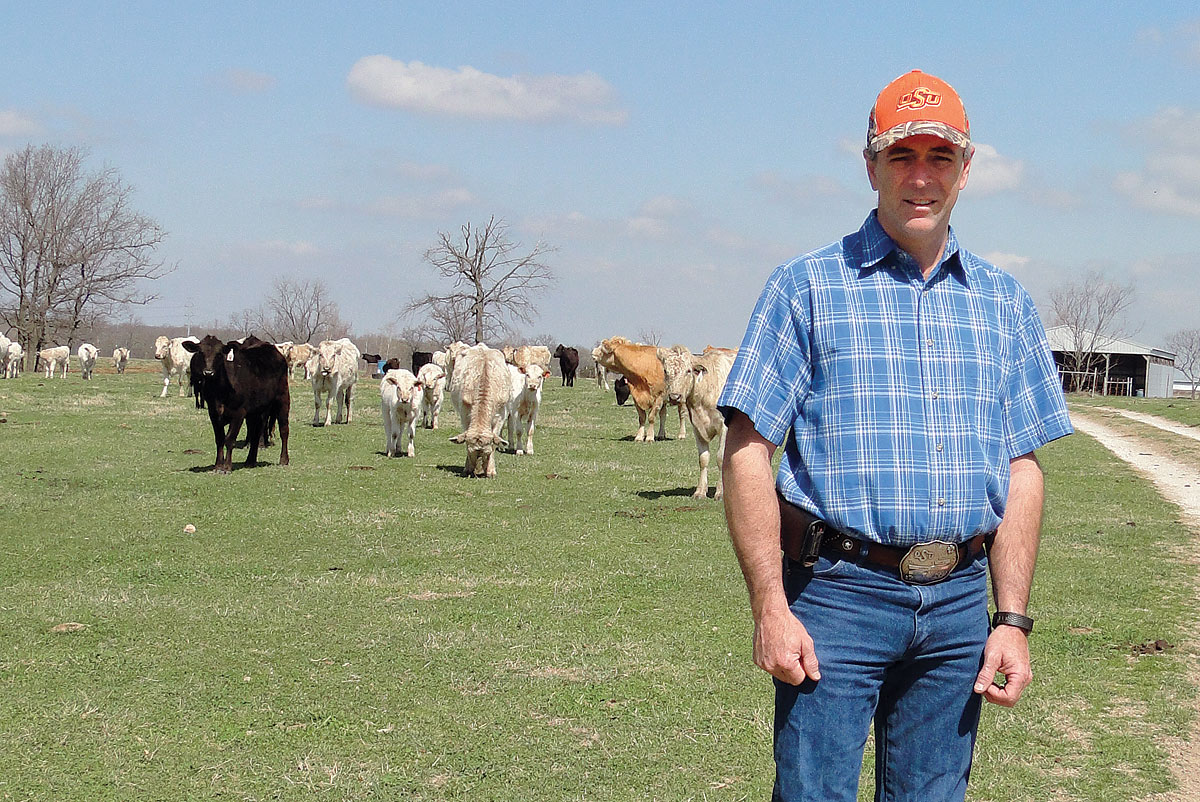
The Pigeon family operation boasts cattle, broilers and a greenhouse business
Jim and Michele Pigeon run Pigeon Family Farms Nursery located 1 1/2 miles north of Siloam Springs, Ark., on Highway 43.
They have three greenhouses, as well as two broiler houses and a cow/calf operation. They selected the location because most of the rural land for sale in the area was 5 acres or 500, and 80 seemed the perfect size with the added benefit of being close enough to town for convenience. Jim also works full time as a general manager for a 160-house broiler chicken conglomerate named Green County Farms out of Westville, Okla.
Some things cycle. One of Jim’s earliest memories was riding on his father’s Massey Ferguson 35 tractor when he was 5 and standing on the footpad leaning against the fender. Then when Jim and Michele decided to go past the schoolmate stage to the sweetheart stage, their first date was Michele sitting on the fender of a tractor, while Jim raked hay for his dad.
Both went to Oklahoma State University and graduated with animal science degrees.
When the couple purchased their home, Jim had 20 registered Limousin cows he brought to the original acreage, which is now just shy of 300 acres. The couple then bought a Limousin bull to complete their herd. During this time, they both worked off the farm. Michele worked at Little Debbie for 13 years in quality control and Jim started out as a service tech for Peterson Farms in Decatur.
Next came two broiler houses. Jim and Michele decided to go into production chickens because they were a huge part of Jim’s childhood and therefore familiar. They currently raise 6-pound broilers in houses that are now 20 years old. Not surprisingly, maintenance and updating to stay current and compliant with Tyson specifications is their biggest challenge.
As is typical for the industry, biosecurity is a concern. They use foot baths at the doors and keep traffic to a minimum with outsiders suiting up as part of their biosecurity protocol. A unique aspect of their operation, however, is heating with coal.
“Coal is a lot more work, but much cheaper, rather like using 30-cent a gallon propane with the same BTU production,” Jim explained.
When Michele left Little Debbie’s in 2006, she wanted a greenhouse. At the time, daughters Emily, Brooke and Megan, and they were fond of farmers market outings. Burl Doyle, who had a nursery in Stilwell and became a mentor, told Michele to build a greenhouse since she liked plants so much.
The business has grown to 3,700-square feet under roof with an equal amount of outdoor area for mums and pumpkins. She now raises 600 hanging baskets a year and 750 pots of mums. This year, for the first time, Michele sold from her business location on the highway rather than also going to farmers markets. As if she is not busy enough, Michele is also the main leader for the Bloomfield 4-H Club in Gentry.
The cow/calf operation is more Jim’s domain. However, he readily admits he is still getting back into production cattle rather than his daughters’ show cattle and learning as he goes.
Jim is one of those producers who love to tinker with bloodlines. He has 115 mostly Angus/cross mommas bred by five bulls: four Brangus and one Simental “just to mix it up some.” His goal with the combination of Brangus and Simental is to “beef his calves up a bit so they don’t have as much ear and leather on them.” Other breeds in the mix are Limousin and Charolais.
Jim believes in a perfect world all calves would be born in the spring because those calves are ready for grass when the grass starts growing. As a result, he needs much less feed to get through the winter. However, because time is Jim’s biggest foe, he evens his work load by having both fall and spring calves. He creep feeds the calves beginning at 3 months and weans at 6 months, sometimes selling calves right off the cow. He recently tried backgrounding for 45 days with a particular sale in mind. Unfortunately, the market dropped when that sale was scheduled. Not discouraged, he plans on backgrounding again to maximize profits.
All cattle are worked by the family when the calves are 3 months old. Jim prefers banding rather than castrating because he finds it quicker, easier and less stressful on the calves. He worms with a variety of products and methods as well as on a flexible time plan to prevent resistance.
New cross fencing was added to accommodate the 80 Angus/cross mommas he bought a year ago when he decided to get back into the production cattle business. The first time he moved his new herd, he had to get cowboys to help. He since has trained them with cubes and last time moved half just using those cubes.
Jim and Michele have three daughters: Emily has “left the nest” and lives in South Carolina with her Marine husband and their new daughter, Avery, while Brooke and Megan still live at home. Brooke and Megan are involved in FFA but mostly 4-H. Brooke, who is studying elementary education at John Brown University, has eight Brangus cows and plans on keeping cows the rest of her life, no matter where she ends up. Megan, on the other hand, appreciates the diversity in the 4-H program and has added cooking and sewing to her show goats, all of which she enters at the Benton County Fair.






